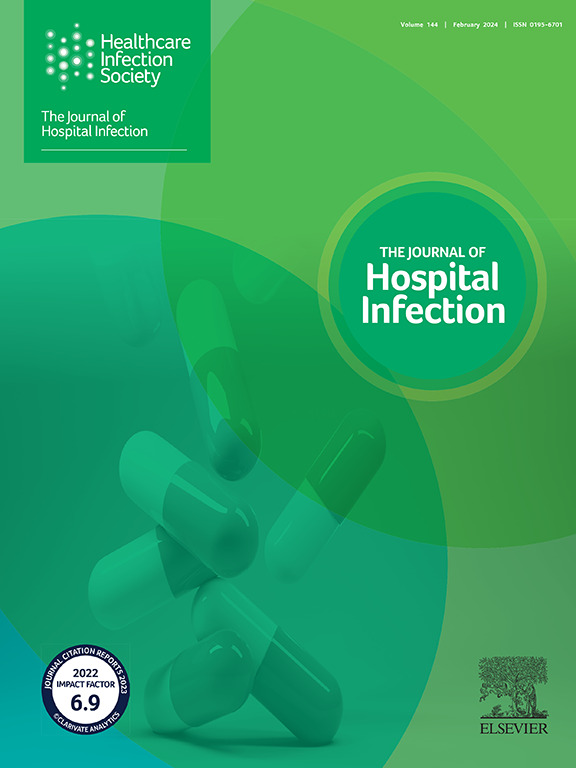Central venous catheters in very low birthweight infants: results from a national survey
IF 3.1
3区 医学
Q1 INFECTIOUS DISEASES
引用次数: 0
Abstract
Background
Central venous catheters (CVCs) are commonly used in preterm infants. They ensure secure vascular access but are also linked to relevant complications such as catheter-associated infections. Data on CVC practice in neonatal intensive care units (NICUs) are scarce, and management has rarely been comprehensively evaluated to date.
Aim
To evaluate daily practice of CVC usage in German tertiary level NICUs.
Methods
Using a web-based survey, all 163 tertiary level NICUs in Germany were asked to provide information on local CVC practices, including indications, catheter types, and infection prevention measures.
Findings
Anonymized data from N = 88 NICUs were analysed (response rate: 54%). Difficult venous access (85%) as well as administration of inotropes (90%) or parenteral nutrition (84%) were named as the most common reasons for CVC insertion. Peripherally inserted central catheters were the preferred catheter type (90–91% in weeks 1–2). Bloodstream infections were identified as the most frequent catheter-associated complication (65%). Key infection prevention measures highlighted by participants included strict hygiene upon catheter insertion (93%) and handling (83%) as well as early catheter removal (90%). However, practices varied significantly across units, particularly regarding skin antisepsis, routine dressing and catheter changes, antimicrobial prophylaxis, and device stewardship.
Conclusion
This survey provides a comprehensive overview of CVC use in German NICUs. It reveals significant variations in practices, reflecting both adherence to and deviations from national recommendations, thereby emphasizing areas of strength as well as opportunities for improvements, such as benchmarking for device stewardship.
中心静脉导管在极低出生体重儿:来自全国调查的结果。
中心静脉导管(CVCs)常用于早产儿。它们确保了血管通道的安全,但也与导管相关感染等相关并发症有关。关于新生儿重症监护病房(NICUs) CVC实践的数据很少,迄今为止也很少对其管理进行全面评估。方法:通过一项基于网络的调查,要求德国所有163个三级nicu提供当地CVC实践的信息,包括适应症、导管类型和感染预防措施。结果:本研究分析了n=88个新生儿重症监护病房的匿名数据(有效率54%)。静脉通道困难(85%)以及使用肌力药物(90%)或肠外营养(84%)被认为是CVC插入的最常见原因。首选的导管类型为外周中心置管(90- 91%)。血流感染被认为是最常见的导管相关并发症(65%)。参与者强调的主要感染预防措施包括导管插入(93%)和处理(83%)时的严格卫生以及早期拔管(90%)。然而,各单位的做法差异很大,特别是在皮肤消毒、常规敷料和导管更换、抗菌预防和设备管理方面。结论:本调查提供了德国新生儿重症监护病房CVC使用的全面概述。它揭示了实践中的重大差异,反映了对国家建议的遵守和偏离,从而强调了优势领域和改进机会,例如器械管理的基准。
本文章由计算机程序翻译,如有差异,请以英文原文为准。
求助全文
约1分钟内获得全文
求助全文
来源期刊

Journal of Hospital Infection
医学-传染病学
CiteScore
12.70
自引率
5.80%
发文量
271
审稿时长
19 days
期刊介绍:
The Journal of Hospital Infection is the editorially independent scientific publication of the Healthcare Infection Society. The aim of the Journal is to publish high quality research and information relating to infection prevention and control that is relevant to an international audience.
The Journal welcomes submissions that relate to all aspects of infection prevention and control in healthcare settings. This includes submissions that:
provide new insight into the epidemiology, surveillance, or prevention and control of healthcare-associated infections and antimicrobial resistance in healthcare settings;
provide new insight into cleaning, disinfection and decontamination;
provide new insight into the design of healthcare premises;
describe novel aspects of outbreaks of infection;
throw light on techniques for effective antimicrobial stewardship;
describe novel techniques (laboratory-based or point of care) for the detection of infection or antimicrobial resistance in the healthcare setting, particularly if these can be used to facilitate infection prevention and control;
improve understanding of the motivations of safe healthcare behaviour, or describe techniques for achieving behavioural and cultural change;
improve understanding of the use of IT systems in infection surveillance and prevention and control.
 求助内容:
求助内容: 应助结果提醒方式:
应助结果提醒方式:


